Who Controls the User Experience? AMD’s Carrizo Thoroughly Tested
by Ian Cutress on February 4, 2016 8:00 AM EST#3 The Toshiba Satellite E45DW-C4210 (Carrizo, FX-8800P)
If E45DW-C4210 comes in as a mouthful relevant to very few people, you are probably right, so we’ll just refer to it as the Toshiba Satellite from here on in. Having a Satellite for testing this piece was somewhat amusing, given I had recently bought one for my grandparents and upgraded it (there’s a separate mini-review of that coming later), and wasn’t sure if what I had found on my grandparents' model would also be found here.
| Toshiba Satellite E45DW-C4210 (Carrizo) Specifications | |
| Size and Resolution | 14-inch, 1366x768 TN with Touch |
| Processor | AMD FX-8800P Dual module, 4 threads 2.1 GHz Base Frequency 3.4 GHz Turbo Frequency |
| Graphics | Integrated R7 512 Shader Cores 800 MHz maximum frequency GCN 1.2 |
| TDP | 15W |
| Memory | 8 GB in Single Channel Operation 1 x 8GB at DDR3L-1600 C11 1 SO-DIMM Slot Only |
| Storage | 750GB Toshiba HDD |
| Battery Size | 45.298 Wh 3 cell Li-Ion design |
| WiFi | Realtek 8821AE 802.11ac 1x1 |
| Optical Drive | No |
| Dimensions | 13.3 x 9.3 x 0.83-inch 337.4 x 235.0 x 21.05 mm |
| Weight | From 4.5 lbs (2.05 kg) |
| Webcam | 1280x720 |
| Other Features | Memory Card Reader HDMI 2 x USB 3.0 + 1 x USB 2.0 |
| Operating System | Windows 10 Home |
This model of Satellite gets the top-end FX Carrizo processor, the FX-8800P, which is a dual module/quad core design with a 2.1 GHz base frequency but a 3.4 GHz turbo frequency. Because the FX line still exists in AMD’s mobile processors, it means it gets top tier graphics as well, which for integrated graphics means 512 streaming processors running at 800 MHz. This is pretty much the top end AMD integrated graphics configuration that anyone can buy, save a pre-overclocked system. To continue with the plus points in the hardware, the Toshiba was also fitted with a Realtek 8821AE Wi-Fi card which also follows the 802.11ac M.2 standard as described in the 745 G3 but this is a single stream version, which limits 802.11ac benefits such as beam forming.
Then, the downsides begin, or where Toshiba saved some money. The display is a pretty bad 1366x768 TN panel that didn’t want to play ball with our display testing equipment, but was surprisingly touch enabled which made things better when you used the ‘Devil’s Trackpad’. With no offence intended towards Toshiba, I seriously wrote that in my notes while I was testing, and that isn’t a good thing. The nearest thing to this trackpad would be the ‘off’ position. I’m not sure if it was a bad sensor, a poor sensor, something with the coating or what, but one of the worst things a laptop can do when being tested is when the tester wants to throw it across the room. The solution would be to insert a mouse, forget about it, and then 'remember how much you saved'. Unfortunately that race to the bottom on trackpads ends up a negative feedback loop for all concerned.
On the storage side, a combination 8GB of memory (single channel DDR3L-1600, naturally) and a 750 GB mechanical hard disk left the model with few plus points aside from the top end processor.
The Design
So firstly, the design of this Satellite one is more towards brushed metal for a sleeker look.
Functionally, there are a number of good and bad points to list. Despite the brushed metal finish on the top, the design is actually mostly plastic, with two vents at the rear for airflow. The hinge is also a 360º hinge as part of the Radius range.
One of these is an intake and the other is the exhaust, which at least keeps all the warm air out of the back of the laptop, although anyone using the laptop on their lap might be able to feel it depending on the workload. If the warning sticker is anything to go by:
CAUTION!
PC BASE CAN BECOME HOT!
AVOID PROLONGED CONTACT
TO PREVENT HEAT INJURY TO SKIN
You have to wonder – is that an AMD problem due to heat generation, or a Toshiba problem due to bad heat soak of plastic design? Either way, there are other 15W devices that don’t have these warnings.
The sides have two USB 3.0 ports, a HDMI port, the Kensington lock port, a USB 2.0 port, audio ports, a volume rocker, a power connector and a specific button to enter Tile Mode in windows.
The brushed metal finish is also on the cover, and again this was an AMD shelf model featuring a few scrapes but nothing too noticeable at a quick glance.
The audio arrangement is provided by Harman/Kardon, and the keyboard uses equal sized separate buttons for the arrow keys as well as the regular delete/home/end set. There are no quick buttons for mute or airplane mode however.
The trackpad on the specific device we tested was absolutely terrible. The only practical way to use this laptop was to use a mouse.
On the display side of things, as noted above for some reason this unit would not get along with our colorimeter, crashing each time we tried to take a reading. The 45.298 Wh battery gave the following charge profile:


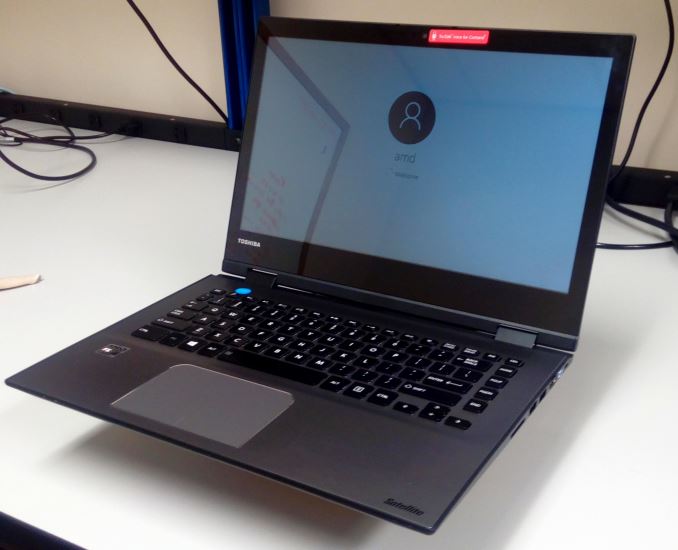










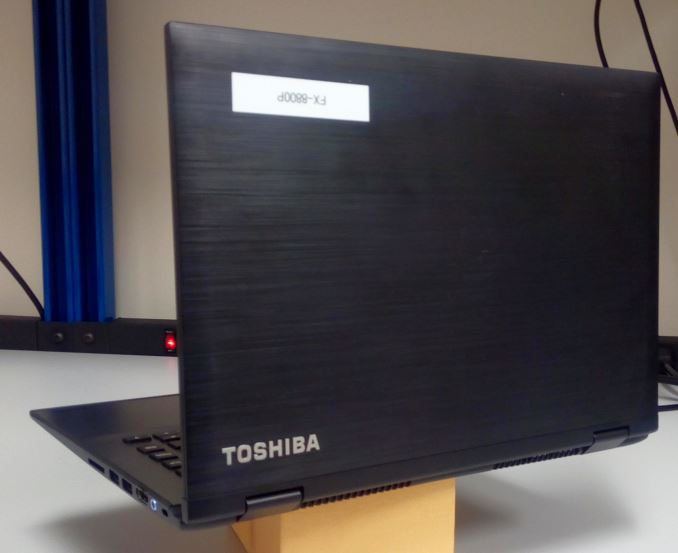
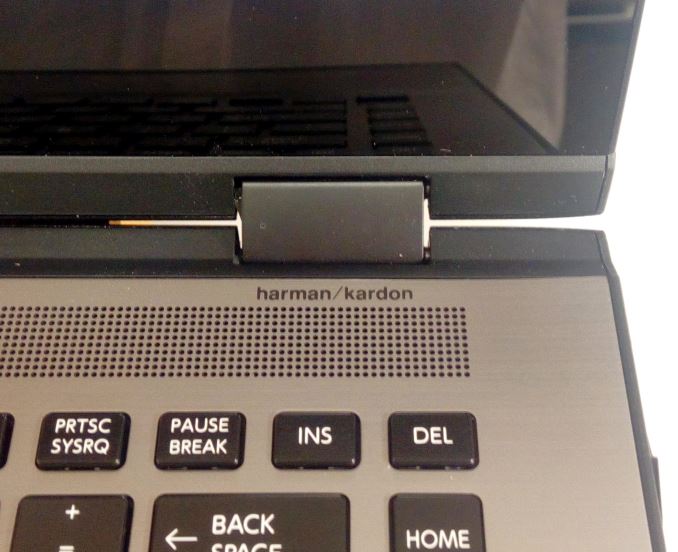
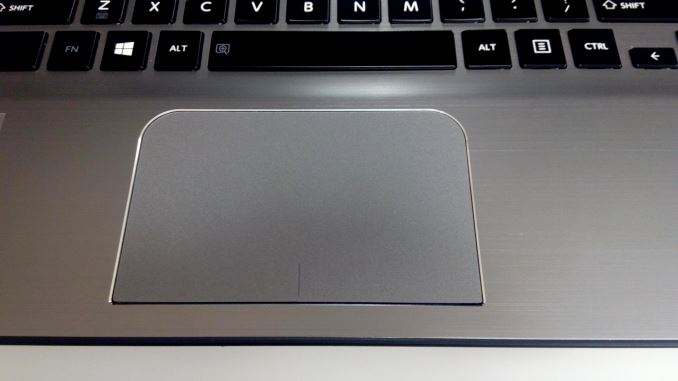
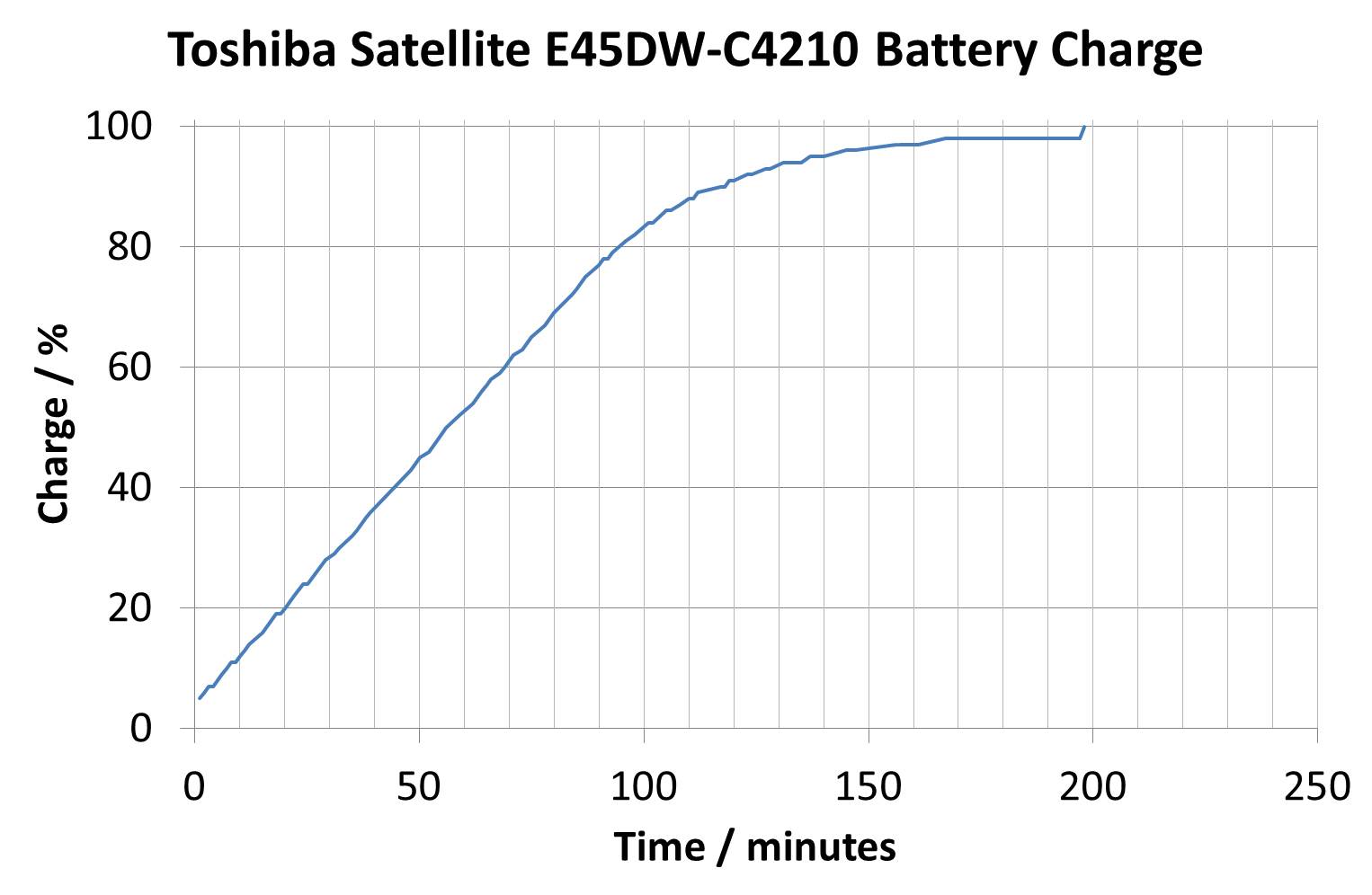








175 Comments
View All Comments
basicmath - Tuesday, February 9, 2016 - link
No it's really not, this laptop came from the factory with dual channel capability but that capability was not utilised because that would have shown the platform in a much better light, he even states that he checked the chips in the G2 to confirm that it was single channel. Upgrading the RAM on a laptop is a simple process that any end user can perform. The only discernible difference between the APU in the G2 & G3 is the number of GPU cores so why did he even bother testing the G3 without using dual channel configuration?Intel999 - Sunday, February 7, 2016 - link
@IanI look forward to that R-series test as it will provide a sneak peek at how much DDR4 relieves the bottleneck on integrated graphics when Bristol Ridge comes out.
That $70 Athlon X4 845 is intriguing as well.
AS118 - Saturday, February 6, 2016 - link
Good article (although to be fair, I mostly skimmed it), and I agree with the conclusions. AMD should try harder to make sure their high-end products are paired with good components. Single-channel ram, bad screens, and slow hard drives with an A10 or mobile FX defeats the purpose of having those higher end APU's.Plus, people will get a bad impression of AMD if a lot of them have poor trackpads, etc. I wish they'd make their own "signature" brand of laptops, and find someone to help make them a thing.
TheinsanegamerN - Thursday, February 11, 2016 - link
Both clevo and MSI have treated AMD well before, Im sure either would love to have exclusive rights to the high end AMD notebook.That being said, I doubt AMD has the intelligence to pull it off. They seem to be run by monkeys 90% of the time.
Cryio - Saturday, February 6, 2016 - link
I'm really sorry for AMD. Kaveri and Carizzo on mobile, when configured to the proper ram, cooling and when using the highest performing part ... would've provided awesome performance, compared to Haswell and Broadwell. But no one bothered.Bristol Ridge will basically be Carizzo with DDR4 support and since it will be even better binned 28 nm CPUs, maybe we'll get even higher frequency out of Excavator. As for GCN 2.0 GPUs ... it will be interesting to see.
I love my Surface Pro 4, even given the disaster that is Skylake drivers and Windows 10 horrible efficiency compared to W8.1. But MAN. I would've loved a proper Carrizo based Surface Pro/Book.
Gadgety - Saturday, February 6, 2016 - link
A confirmation, with in depth detail. Nice write up.Khenglish - Sunday, February 7, 2016 - link
I would have really liked to see some dual channel results, or at least pulling a memory stick from the Kaveri and Intel systems to get a fair comparison. AMD says Zen brings a 40% IPC improvement. It'd be great to have a baseline to see if that 40% improvement is enough. In the dual channel intel to single channel AMD comparisons it does not appear to be enough, but we don't know how big of a factor memory was.Jon Irenicus - Sunday, February 7, 2016 - link
I want to buy an amd part for my next notebook but as was mentioned in the article, oems only choose bargain basement platforms to put the amd inside. The elitebook is the one exception, along with the lenovo if you don't mind the bulk.But the elitebooks are super overpriced for what you get. They need to release an hp spectre version of a notebook with a zen apu, a dell xps notebook variant with an apu. Ideally, the models that include a discreet gpu should allow the apu to work in tandem.
In 2017 dx12 will be in full effect with games, and having two gpus working together by default could give a lot of amd equipped systems a larger edge, especially if the oversized ipc deficits between excavator and intel parts is minimized with zen.
The future really does rest on Zen, amd needs to laser focus on performance per watt and ipc, and equip the 2017 apus with polaris gpu parts or vega or whatever the first iterations will be called. That has to be the minimum. Put those in nice chassis with solid battery life and that is all they need.
Intel999 - Sunday, February 7, 2016 - link
In DX12 dual graphics will be automatic. Even an Intel Igpu combined with a discrete Nvidia or AMD GPU will "merge" the graphic capabilities in the laptop.Theoretically, an AMD APU combined with an AMD GPU might have an advantage as all graphics would be from the same underlying graphic architecture. Time will tell if this bares out.
Ryan Smith - Monday, February 8, 2016 - link
Note that it's only going to be as automatic as the game developer makes it, as devs will be responsible for implementing it. For the moment game devs are going to be the wildcard.